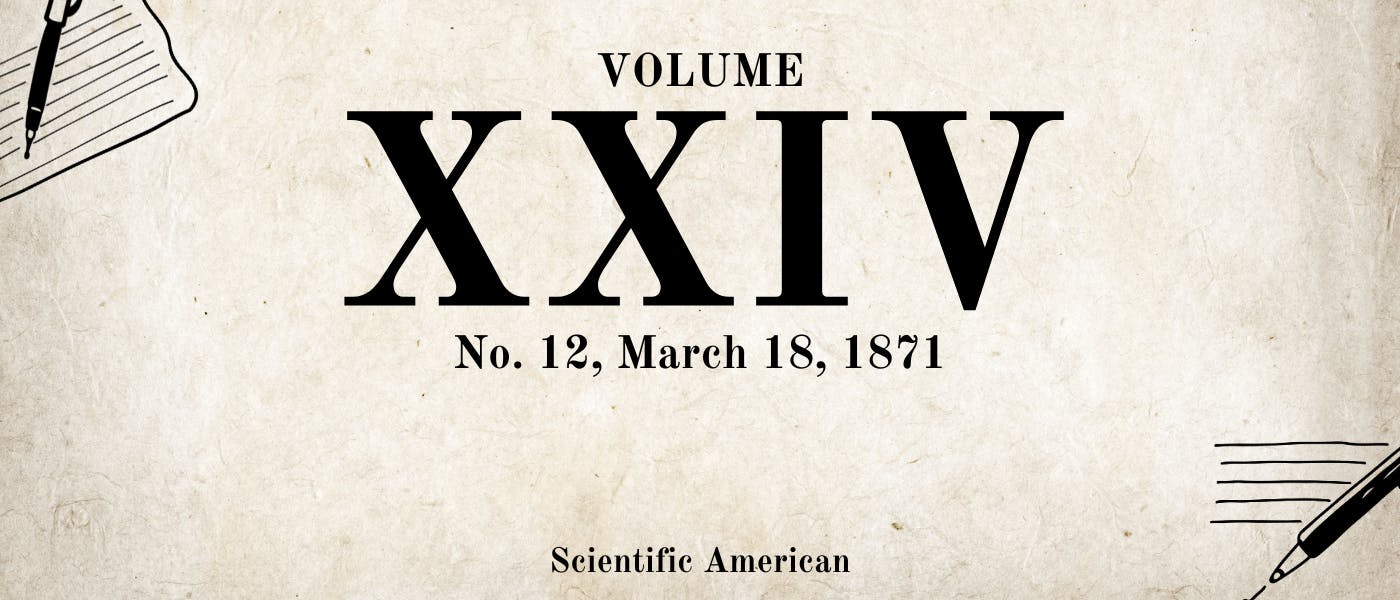Scientific American, Volume XXIV., No. 12, March 18, 1871 by Various, is part of the HackerNoon Books Series. You can jump to any chapter in this book here. THE SHERMAN PROCESS.
THE SHERMAN PROCESS.
When people boast of extraordinary successes in processes the details of which are kept profoundly hidden from public scrutiny, and when the evidences of success are presented in the doubtful form of specimens which the public has no means of tracing directly to the process, the public is apt to be skeptical, and to express skepticism often in not very complimentary terms.
For a considerable time, the public has been treated to highly-colored accounts of a wonderful metallurgic process whereby the best iron and steel were said to be made, from the very worst materials, almost in the twinkling of an eye. This process has been called after its assumed inventor, or discoverer, the "Sherman Process." The details of the process are still withheld, but we last week gave an extract from an English contemporary, which throws a little light upon the subject.
The agent relied upon to effect the remarkable transformation claimed, is iodine, used preferably in the form of iodide of potassium, and very little of it is said to produce a most marvellous change in the character of the metal.
A very feeble attempt at explaining the rationale of this effect has been made, in one or two English journals, which we opine will not prove very satisfactory to chemists and scientific metallurgists. The Engineer has published two three-column articles upon the subject, the first containing very little information, and the second a great number of unnecessary paragraphs, but which gives the proportion of the iodide used, in the extremely scientific and accurate formula expressed in the terms "a small quantity."
Assertions of remarkable success have also been given. Nothing, however, was said of remarkable failures, of which there have doubtless been some. A series of continued successes would, we should think, by this time, have sufficed for the parturition of this metallurgic process, and the discovery would ere this have been introduced to the world, had there not been some drawbacks.
We are not prepared to deny in toto that the process is all that is claimed for it; but the way in which it has been managed is certainly one not likely to encourage faith in it.
The very name of "process" implies a system perfected, and if it be still so far back in the experimental stage that nothing definite in the way of results can be relied upon, it is not yet a process. If, in the use of iodine, in some instances, fine grades of iron or steel are produced, and in as many other experiments, with the same material, failures result, it is just as fair to attribute the failures to the iodine, as the successes. A process worthy the name is one that acts with approximate uniformity, and when, in its use, results vary widely from what is usual, the variation may be traced to important differences in the conditions of its application.
On the whole, we are inclined to believe Mr. Sherman's experiments have not yet developed a definite process, and we shall receive with much allowance the glowing statements published in regard to it, until such time as it can face the world and defy unbelief.
The patents obtained by Mr. Sherman seem to cover the use of iodine, rather than the manner of using it, and throw no light upon the rationale of the process.
A patent was granted by the United States Patent Office, Sept. 13, 1870, to J. C. Atwood, in which the inventor claims the use of iodide of potassium in connection with the carbons and fluxes used in making and refining iron. In his specification he states that he uses about fifteen grains of this salt to eighty pounds of the metal. This is about 1⁄373 of one per cent. He uses in connection with this exceedingly small proportion of iodide of potassium, about two ounces of lampblack, or charcoal, and four ounces of manganese, and asserts that steel made with these materials will be superior in quality to that made by the old method. These claims we are inclined to discredit. Certainly, we see no chemical reason why this small amount of iodide should produce such an effect, and the specification itself throws no light upon our darkness.
If the experiments in these so-called processes have no better basis than is apparent from such information as at present can be gathered respecting them, it is probable we shall wait some time before the promised revolution in iron and steel manufacture is accomplished through their use.
About HackerNoon Book Series: We bring you the most important technical, scientific, and insightful public domain books.
This book is part of the public domain. Various (2006). Scientific American, Volume XXIV., No. 12, March 18, 1871. Urbana, Illinois: Project Gutenberg. Retrieved https://www.gutenberg.org/cache/epub/19180/pg19180-images.html
This eBook is for the use of anyone anywhere at no cost and with almost no restrictions whatsoever. You may copy it, give it away or re-use it under the terms of the Project Gutenberg License included with this eBook or online at www.gutenberg.org, located at https://www.gutenberg.org/policy/license.html.

